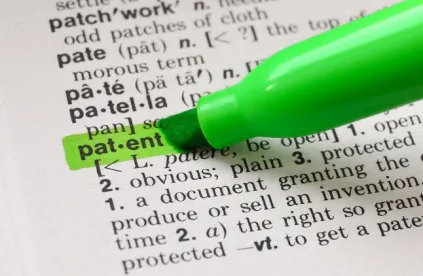As a Patent Owner in an instituted Inter Partes Review (IPR), there are dozens of considerations to bear in mind – from strategically approaching depositions and maximizing expert testimony, to drafting the final say in your sur-reply. We authored the “Patent Owner Tips for Surviving an Instituted IPR” series to provide valuable practice insights from institution forward. In the summary below, we provide key takeaways from throughout the series. All 19 tips can be read here: Surviving an Instituted IPR
Deposition
One of the first and most critical tasks before you is deposing the Petitioner’s witnesses, including its experts - but approaching an IPR deposition like a typical litigation deposition could be a big mistake. Since IPR depositions are treated differently than fact-gathering depositions in district court litigation, a Patent Owner should approach the IPR deposition with different goals. When deciding whether to broach a topic in a deposition, you should weigh the potential risks versus the potential rewards. The risk of the potential damage that can be caused by probing certain topics should be weighed against the potential gains. Knowing what you have, knowing what you should stay away from, and knowing what you absolutely need during the IPR deposition are three guides to follow that will lead to success.
Expert Declaration
The right expert can be the critical piece that saves the validity of your patent, and finding the right expert requires careful selection and due diligence. Equally as important is the support and corroboration of your expert’s opinion with detailed reasoning and documentary evidence. Frankly, unsupported expert testimony can lead to outright rejection of their opinion. Because the expert witness will not be able to provide live testimony before the Board, expert declarations are the final evidence of the experts’ opinions. Patent Owners can exploit this advantage and use their expert declarations to fill in the gaps left by Petitioner’s expert testimony. This not only allows the Patent Owner’s expert to have the last word, they can effectively direct the Board to the Petitioner’s failure to carry their burden of proof.
The knowledge and industry experience of an expert should be tapped into and used to not only persuade, but educate, the Board about what skilled artisans were doing at the time of the invention, what the industry was going through, and why skilled artisans would not have found the patent claims to be anticipated or obvious at that time.
Seeking Additional Discovery
Discovery procedures in IPR proceedings are more limited in scope and timing compared to cases in district court. There are three types of discovery at the PTAB: mandatory initial disclosures, limited routine discovery, and limited additional discovery. Limited additional discovery, absent agreement by the other party, may only be obtained when “such additional discovery is in the interests of justice.” In granting a request for discovery, the Board is guided by the five Garmin factors set forth in the precedential opinion in Garmin Int’l, Inc. v. Cuozzo Speed Techs. LLC.
Be prepared to substantively discuss why the Garmin factors rule in your favor at the conference call with the Board, and, if relevant, explain why you may have delayed in filing your request.
Despite its limitations, a party should seek additional discovery in an IPR when it can set forth information beyond speculation that the documents, information or testimony it seeks supports a key issue in the proceeding and sufficiently meets all of the Garmin factors.
Drafting Response
When confronted with instituted IPRs, another path to victory for the Patent Owner is identifying and exploiting issues that the Petition glossed over and bring those to the attention of the Board. Two such issues could include:
-
Proper claim constructions of key claim terms
-
Challenging the public accessibility of printed publications.
The Patent Owner should also include all arguments it wishes to preserve for appeal in its Patent Owner Response, including arguments that the Patent Owner believes are unlikely to succeed before the Board but may be attractive to the Federal Circuit.
Additionally in IPR proceedings, the PTAB will often uphold the validity of dependent claims despite finding the independent claim invalid, so it is important to defend dependent claims, as they may carry the day and be used at trial even after the independent claims fall.
Motion to Amend
There are several instances where a motion to amend may be a favorable option for a Patent Owner to consider. Unlike the challenged claims at issue in an IPR, all of the substitute amended claims are subject to PTAB review for compliance with all of the statutory requirements for patentability, and not just for patentability in view of the prior art. Amended claims are subject to greater scrutiny by the Board before they can be declared valid. Nevertheless, amended claims can prove to be very powerful in an IPR by surviving where the original claims could not. Our posts on motion to amend discuss when amending is a good option, and when a Patent Owner should think twice before amending. We also provide tips that may significantly increase the chances of getting amended claims granted.
Defending Depositions of Declarants
At this stage of the proceeding, your POR has been filed, and all the facts and arguments you need have already been developed, including any necessary expert testimony. There should be nothing that you need from your expert at this point, but the Petitioner still has the opportunity to depose and potentially discredit your expert. Thus, there is not much to be gained at your expert’s deposition, but there is a lot to be lost. You can avoid any pitfalls by ensuring your expert is thoroughly prepared, listens to and understands all questions carefully, doesn’t guess at hypotheticals, uses their declaration to refresh their memory, and is wary when opposing counsel characterizes their testimony.
Sur-Reply Strategies
And finally, after the Patent Owner has filed its Response, developed all the facts and evidence, and taken and defended expert depositions, the Sur-Reply now gives the Patent Owner the last evidentiary word.
The Sur-Reply is a vehicle by which Patent Owners may respond to arguments made in the Petitioner’s Reply, discuss reply declaration testimony, or highlight important cross-examination testimony. Because the Patent Owner has the last evidentiary word, it is also an opportunity to highlight Petitioner’s overall failure of proof, inconsistent testimony from its expert, and any other damaging testimony from cross-examination. It should also be viewed as the final opportunity to educate the Board and correct any potential misinterpretations of evidence prior to the oral hearing.






 />i
/>i

